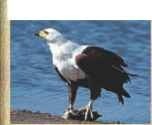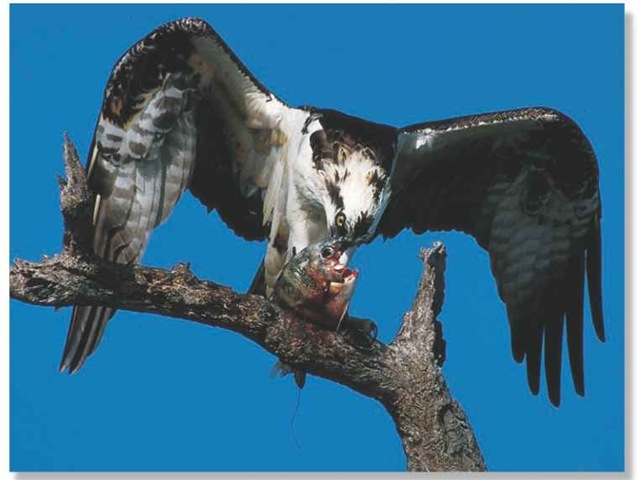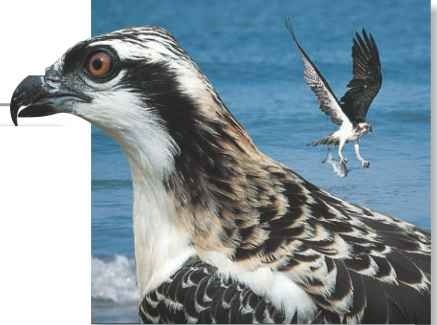ORDER
Accipitriformes
FAMILY
Pandionidae
GENUS & SPECIES
KEY FEATURES
Remarkably powerful for its size, it can seize and fly off with prey almost as heavy as itself
Spiny-soled feet, tipped with razor-sharp talons, enable it to grip the most slippery of prey
Most widespread of all birds of prey, occurring on every continent except Antarctica
WHERE IN THE WORLD?
Breeds throughout much of Europe and Asia, North America, Southeast Asia and Australasia; winters in South America, Africa and India

LIFECYCLE
The osprey, also known as the fish hawk, is an adaptable, eagle-sized bird that preys almost exclusively on fish in nearly every fresh- and saltwater habitat in the world.
HABITAT
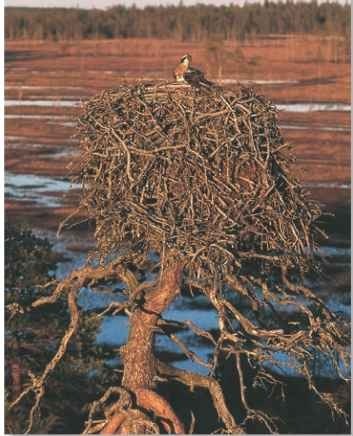
A Waterside bird The osprey exploits any habitat where it can fish.
The osprey’s range is limited only by the availability of its specialized diet. It can live wherever it has year-round access to clear, unpolluted waters — salty or fresh — that contain plentiful supplies of small- to medium-sized surface-feeding fish.
Favored saltwater habitats include rocky, sandy or forested coastlines, remote oceanic islands, salt marshes and tropical mangrove swamps. Inland, it’s found near lakes, rivers and marshes. In all habitats, the osprey seeks tall trees to perch and nest in, but will also use electricity poles, harbor buoys, bridges and abandoned buildings.
FOOD & HUNTING
BEHAVIOR
The osprey flourishes in a wide range of climates, but northern populations migrate south in winter as waters become cold or frozen, driving fish to greater depths. Individual ospreys migrate singly, but often in the company of other birds of prey, such as red-tailed hawks and kestrels. At this time, loose colonies of as many as 30 birds sometimes gather on estuaries or along rich stretches of coastline.
The osprey devotes much time to keeping its plumage in good condition, removing any sticky fish scales and reapplying oil from the preen gland above its tail to keep its feathers waterproofed.
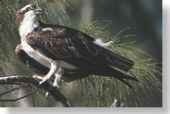
A Sitting pretty Between dives, the osprey dries, preening its feathers.
CONSERVATION
Although still widespread and numerous, many populations of osprey are declining due to pollution and overfishing. A large number of ospreys are also shot each year on migration.
When hunting, the osprey patrols up and down a stretch of water; flying with deep, relaxed wingbeats as it searches for a fish below. It may hover clumsily over the same spot before closing its wings and plunging for the kill.
It feeds on fish, including trout, salmon and carp from fish farms and stocked lakes, but also takes carrion, small birds and mammals.
Sharp implement Once a fish is caught, the osprey returns to a perch and rips it apart with its bill.
Sparrows occasionally make their homes within the sprawling osprey’s nest.
The osprey has such large feet that sometimes it can snatch two small fish from the water in a single dive.
Less than half of an osprey’s dives capture a fish. Strong winds and murky water can affect the accuracy of its strike and reduce its success.
PERFECT TIMING
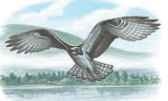
Search…
Flapping slowly 65-100′ above a lake, its wings held in a M-shape, an osprey searches the water for prey.
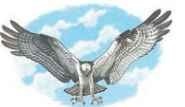
Stoop…
Spotting a fish below the water’s surface, the bird draws in its wings and plunges at a 45° angle.
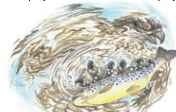
Snatch..
Judging its final attack with superb accuracy, the osprey dives feetfirst to snatch the fish from the water.
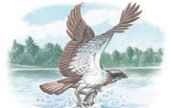
Success
Struggling into the air with its load, the bird shakes water from its wings and flies to its perch.
BREEDING
Breeding seasons depend on the latitude of the osprey’s nest site: January in subtropical regions; May and June in northern areas.
Ospreys mate for life, each pair refurbishing the same substantial nest year after yearThe female lays three eggs and incubates them alone; the male relieves her for short periods while she hunts. Once the first chick hatches, the male fishes for the family, bringing up to seven fish to the nest each day. Before delivering them, he eats their heads so the fish can’t damage eggs or young by floundering around. After six weeks, the female helps the male feed the chicks until they fledge.
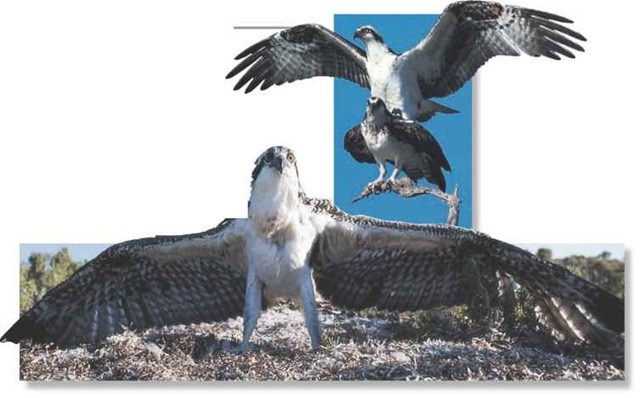
A Dramatic displays A pair mates on a perch after a showy courtship display of dramatic swoops and wing displays.
Growth spurt Due to its protein-rich fish diet, the young osprey fledges at 7—8 weeks.
PROFILE
Osprey
Sharp eyes, narrow wings and dexterous, powerfully taloned feet equip the osprey to find, capture and kill the fish on which it feeds.
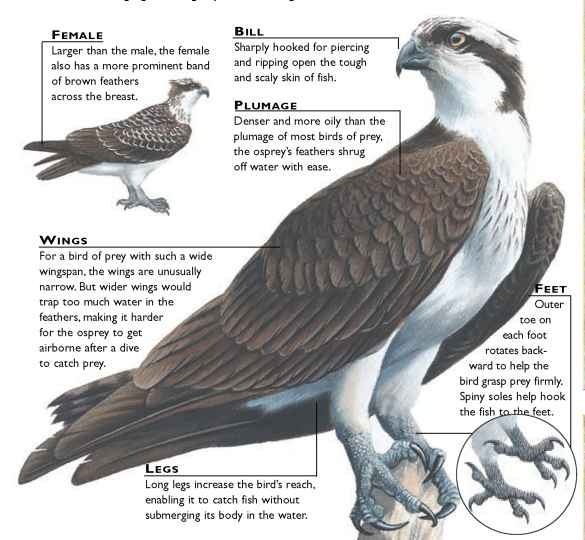
CREATURE COMPARISONS
Larger than the osprey, with a wingspan of 6-8′ and up to 7 lbs., the African fish eagle (Haliaeetus vocifer) is also an accomplished predator Having spotted a flash of silver from its waterside perch, the eagle flies over the water and deftly snatches its victim with a single foot, barely missing a wingbeat as it does. Only when catching very large fish does the eagle partly submerge itself Where its range overlaps with the osprey’s, the eagle isn’t above a little aerial piracy and will often bully its smaller relative into giving up its catch.
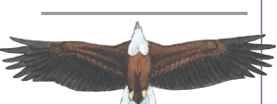
African fish eagle

| VITAL STATISTICS Weight Male 3 lbs.; female 3.5 lbs. |
|
| Length | About 2′ for both sexes |
| Wingspan | 5′ |
| Sexual Maturity; | 3 years |
| Breeding ^ : Season | Varies with range |
| Number of Eggs | 2-5; usually 3 |
| Incubation Period | 34-40 days |
| Fledging Period | 49-57 days |
| Breeding : Interval | 1 year |
| Typical Diet | Almost entirely freshwater and marine fish |
| Lifespan | 5-15 years |
RELATED SPECIES
• The unique structure of the osprey’s feet led to it being classified in its own family: Pandionidae. In the 220 species of Accipitriformes, there are several fish eaters, including the African fish eagle, Haliaeetus vocifer (below).
